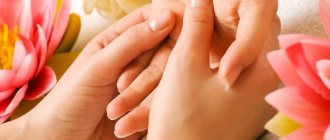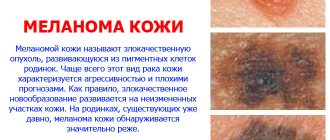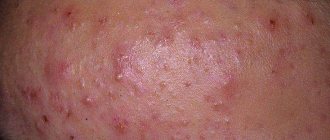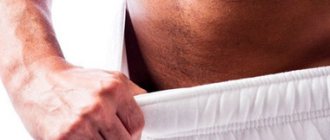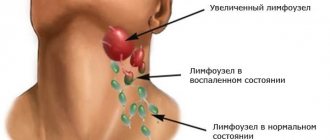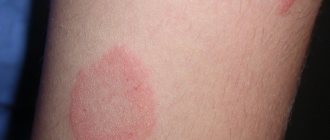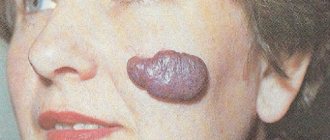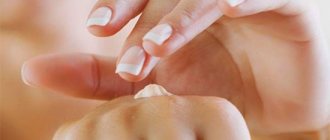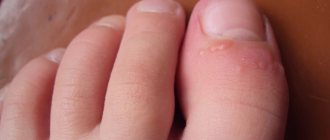A boil on the face is an unpleasant phenomenon not only from an aesthetic point of view. Purulent abscesses cause pain, require careful treatment and sometimes have dangerous consequences.
Boils are the result of the harmful action of pathogenic microflora , mainly Staphylococcus aureus. The bacterium infects the hair follicle, nearby sebaceous glands and neighboring tissues.
The boil usually has a cone-shaped shape; in the middle of this formation there is a purulent-necrotic rod.
In the International Classification of Diseases, skin abscess, boil and carbuncle of the face are designated by the coding L02.0. Purulent lesions of the neck have their own ICD-10 code – L02.1.
A scalp boil (along with an abscess and carbuncle) is designated by code L02.8.
Classification
What does furunculosis look like photo
According to the course of the pathological process, acute and chronic furunculosis are distinguished. There is also a recurrent form, in which a new one quickly forms in place of a healed abscess. The course of such furunculosis is long and difficult to treat with antibiotics. Most often, this form develops in adolescents, allergy sufferers, alcoholics and people with diabetes.
According to its etiology, the disease can be primary or secondary, that is, it develops as a concomitant pathology against the background of another disease.
The clinical picture can be classic, when the body is gradually covered with numerous abscesses, or erased, in which the formation of a necrotic core does not occur.
According to their prevalence, they distinguish between localized furunculosis - damage to a separate area, and disseminated furunculosis - ulcers appear throughout the body.
Views from photos
Despite the fact that all variations of boils are characterized by damage to the hair follicles, the course of the disease varies. The types of boils differ in the severity of the patient’s condition and the extent of the lesion. And although the main features of each of the variations can be seen in the photo, it should be borne in mind that only a specialist can make an accurate diagnosis.
Furuncle
The “classic” version is characterized by damage to one hair follicle. The sizes may vary, but in the absence of complications the course is relatively mild.
It often opens up on its own; for treatment, local ripening-accelerating drugs and dry heat are often used. On average, it takes up to 10 days from the onset of inflammation to the release of the contents and the start of healing.
Abscess boil
An abscess boil is a complication of a regular boil, when the core does not come to the surface or comes out incompletely, and the pus remains inside the dermis.
The danger of this condition lies in the risk of damage to neighboring tissues, their melting and the entry of pathogenic bacteria into large blood vessels. An abscess boil is treated surgically.
READ ALSO: Wen in the groin in men: causes, symptoms and treatment methods
Furunculosis
The disease furunculosis is characterized by multiple formation of boils in a specific area or throughout the body. Acute and chronic course is possible, the latter is more common with serious problems with the immune system.
As a rule, furunculosis requires systemic treatment - local use of dry heat and ointments that draw out pus together with the ingestion of antibiotics and immunomodulators. Before starting therapy, it is important to undergo tests to accurately identify the causative agent of the pathology.
Carbuncle
A serious purulent-necrotic lesion of the dermis, affecting several follicles and sebaceous glands, quickly spreading throughout the skin and subcutaneous fat is called a carbuncle.
The course is more severe than with a normal boil, the symptoms of intoxication are more pronounced, and at the necrotic stage, deep tissue death, even muscle tissue, is possible. Surgical treatment is indicated. Lack of adequate treatment when a carbuncle occurs can lead to death.
Hidradenitis suppurativa
Despite the similar course and common pathogens, hidradenitis cannot be called a boil, since it does not damage the hair follicle, but the sweat gland.
However, after opening a boil in a place with increased sweating (primarily in the armpits), in the absence of proper disinfection, the development of hidradenitis suppurativa is possible. The nodes usually open on days 7–10, and the stem characteristic of boils is absent.
What is a boil?
Furuncle (boil) is a pustular skin disease characterized by acute purulent-necrotic inflammation of the hair follicle and surrounding connective tissue.
The main cause of a boil is a bacterial infection, mainly Staphylococcus aureus, less often white.
Furunculosis is a massive, repeated, chronic formation of boils.
The place where the boil appears can be anywhere except the soles of the feet and palms, but most often, boils form on the back of the head, forearms, lower back, buttocks, abdomen, and lower extremities. The most painful boils are in the ear, nose, face and genitals.
The prognosis for a boil is positive, but there are still complications with this disease - thrombosis, lymphadenitis, sepsis, due to which the formation of boils is considered a fairly serious disease.
Boils have a certain seasonality - most often they form in autumn and spring. In addition, doctors note that most often, boils appear in men, but in children this is generally rare.
Development of a boil
The development of a boil can occur primarily - on healthy skin and secondary, when development occurs against the background of other pathological conditions and diseases of the body, for example, staphyloderma.
The development of a boil occurs in 3 stages, the duration of which, in the absence of complications, is up to 10 days:
Furuncle stage 1 (beginning) - characterized by inflammation of the follicle, in which a solid infiltrate (compaction) of bright red color with unclear boundaries appears in a given place. At the site of the inflamed follicle, pain and tingling are felt. As the boil grows, the seal increases in size, expands, and the surrounding tissues swell.
Stage 2 boil (3-4 days) – characterized by expansion of the boil up to 3 cm in diameter, while in the center of the compaction a purulent-necrotic core with a pustule on the surface is formed. Not only the hair follicle is involved in the process of suppuration, but also the sweat gland with the surrounding connective tissue, while the vessels around it dilate and swelling of collagen is observed. The shape of the boil begins to take on a cone-shaped shape, as if it were a growing mountain. Elastic and collagen fibers inside the “mountain” are destroyed
Collagenized bundles of fibers form a thick protective ring inside the boil, preventing the infectious purulent formation from exiting into the body and its further infection, so it is very important not to squeeze out the boil without understanding the consequences of this process. The opening of the boil must be correct
Further, the skin at the site of inflammation becomes smooth, bluish in color, and the pain intensifies. In case of extensive damage to the body by infection (in the case of a large number of boils), a person may experience symptoms of intoxication, which are expressed by general malaise, weakness, nausea, lack of appetite, headaches and an increase in body temperature up to 38 ° C.
Stage 2 of boil development ends with the spontaneous or artificial opening of the pustule and the release of its contents. The contents of the pustule are a necrotic rod of yellow-green color with a purulent formation, sometimes with the addition of blood.
Stage 3 boil – characterized by the appearance of a “crater” at the site of the opening of the abscess, which is initially filled with granulations, and after 2-3 days, scarring occurs in this place. The scar at the beginning of healing is red, but as it heals it turns white and becomes almost invisible.
The entire flow cycle may be erased; for example, the entire process sometimes occurs only with the formation of infiltrate, i.e. without pus and necrosis. In other cases, the boil, against the background of weakened immunity and other diseases, acquires an abscess or phlegmonous form.
Causes and risk factors
A healthy body is able to fight pathogenic microflora, but a decrease in its protective functions can lead to the development of inflammatory processes.
One of the main reasons for the formation of boils is weak immunity due to:
- chronic diseases;
- not fully cured infections;
- dysfunctions of the endocrine system;
- long-term use of antibiotics, hormonal agents, and drugs that suppress the immune system.
A weakened body is not able to resist the harmful effects of Staphylococcus aureus - it is this bacterium that mainly provokes the appearance of boils on the face and head.
Less commonly, the causative agents are other pathogens - white staphylococcus, streptococci of groups A and B.
There are a number of other reasons why purulent abscesses form in the maxillofacial area:
- skin pathologies – acne, pimples, fungal infections, eczema, atopic dermatitis;
- severe sweating, increased sebum secretion;
- poor hygiene – the pores of insufficiently cleansed skin become clogged with fat and dirt;
- damage to the skin - cuts, abrasions, scratches, burns; in men, microtraumas often occur due to careless shaving;
- skin contamination due to harmful working conditions - dust, contact with chemicals;
- squeezing pimples, which causes infection under the skin;
- hormonal imbalances - often in adolescence, during pregnancy and menopause;
- the presence of bad habits, especially addiction to alcohol, poor nutrition;
- stress and overwork.
The disease occurs more often in children than in adults for a number of reasons:
- children are not yet accustomed to observing the rules of personal hygiene; they spread infection with unwashed hands;
- with atopic dermatitis or other manifestations of allergies, children cannot tolerate itching and scratch the skin, injuring it; Read about the features of atopic dermatitis in children in this material;
- A child has a special skin structure - a network of capillaries is developed in the thin stratum corneum, bacteria easily spread through the bloodstream throughout the body.
Symptoms and stages of development
The boil forms gradually: first, an infiltrate (accumulation of blood and lymph impurities in the tissues) collects around the follicle. It becomes inflamed and looks like folliculitis. After a day or two, the inflammatory process engulfs the entire internal space of the hair follicle and spreads to the sebaceous gland located underneath it. The tissues around the abscess become red and swollen. A congestive-hyperemic node gradually forms inside the follicle. Gradually it begins to rise above the skin, soreness increases, which is pulsating in nature. Pus forms in the cavity of the bulb, and then a fistula.
The process of abscess formation ends with the opening of the abscess. After the upper contents pour out, the bottom of the boil becomes visible. A greenish colored rod is visible in it. Its presence is a fundamental factor for diagnosing the disease. The rod is also rejected over time, then a small portion of blood and the remains of purulent masses pour out. The inflammatory process subsides, the affected area becomes smaller, and the pain disappears.
Upon completion of the eruption of pus, a deep ulcer forms at the site of the boil, shaped like a volcanic crater. If there are remains of pus in it, after some time a boil will ripen in this place again. When the abscess ends in complete cleansing, the ulcer is gradually filled with granulation tissue, and in its place a scar is formed, pulled deep into the skin. Its width and depth depend on how deep the core of the abscess sits.
There are three forms of development of skin pathology:
- Mild - the appearance of single boils on the body is observed, along with this there is an increase in regional lymph nodes. The formation of ulcers causes moderate pain. In a chronic course, relapses occur no more than twice a year.
- Moderate – the appearance of single or multiple ulcers is noted, the formation of which is accompanied by a violent inflammatory reaction. Therefore, the body temperature rises, moderate manifestations of intoxication occur, and regional lymph nodes enlarge.
- Severe – the appearance of several small boils is diagnosed. There is no clear localization. They constantly form on the skin: some pass, new ones appear. Abscesses cause moderate inflammation, enlargement of regional lymph nodes, and the appearance of signs of severe intoxication. The patient may complain of general weakness, excessive sweating, a significant increase in body temperature, and severe headache. With such a clinical picture, it is imperative to seek medical help from a dermatologist.
The causes and treatment of furunculosis are interconnected phenomena; knowledge of how the disease is formed and how it manifests itself helps to develop the correct therapeutic tactics.
Symptoms of an abscess
How can you understand that it’s not just a simple pimple that has popped up on your skin, but a purulent abscess – a boil?
What characteristic symptoms signal this problem, which is especially unpleasant when localized on the face and head in the hair:
- the skin at the site of inflammation turns red and becomes hot to the touch;
- the affected area is dense, swelling occurs around it;
- the sore spot makes itself felt by itching, tingling, pulsation;
- the cone-shaped seal quickly increases in size and causes pain;
- the development of a boil is accompanied by fever, headaches, enlarged lymph nodes, weakness, and sometimes fever.
If such symptoms appear, you should seek help from a doctor, since treating ulcers on the face at home is dangerous due to complications.
It is imperative to visit a doctor if several boils form on your face, close to each other.
This is a sign of the development of a carbuncle, which without proper treatment can provoke infection into the bloodstream. Find out what a carbuncle is, its causes and treatment methods here.
The main causes, treatment methods and photos of cheilitis on the lips are presented in this article.
You can learn about how streptoderma begins in children (with photos) from our publication.
Instructions for using Lokoid cream are discussed here: https://udermatologa.com/prep/kortik/krem-i-maz-lokoid-pokazaniya-instruktsiya-po-primeneniyu-otzyvy/
What is the core of a boil?
The core of the boil is formed at stage 2 of the disease, called purulent-necrotic. At the end of this stage, a white abscess rising above the surface of the skin, surrounded by a red inflammatory halo, is visible on the surface of the boil.
The natural process of a boil involves a gradual thickening of necrotic masses to a dense cylinder located under the covering of the abscess. The walls of the boil thicken, forming a protective membrane around the purulent infiltrate, preventing the spread of infection to the subcutaneous fat.
Under the influence of leukocytes, a dense cylinder is formed from the pus, which is pushed out, after which the healing stage begins.
Purulent exudate, located in the depths of the formation and having the appearance of a compact yellow-greenish “column”, is called the core of the boil.
The rod is a cluster of:
- Inflammatory cells.
- Secretion of the sebaceous gland.
- Epithelium destroyed during the inflammatory reaction.
- A large number of bacteria that caused the boil - staphylococci.
IMPORTANT: Trying to squeeze out a boil that does not have a white “head” on the surface, and therefore a surrounding dense capsule, is very dangerous. You can damage capillaries and lymphatic vessels, into the lumen of which purulent contents with a large number of bacteria will enter
What does it look like in the photo?
The cone can be seen after the boil opens on its own. When the abscess is opened, its cover softens and bursts, thick purulent masses leave the formed cavity, and a dense greenish-yellow column is found in the center.
And this is what the boil stem looks like in the photo.
Important Tips
When treating boils, several important rules should be followed to help speed up recovery and prevent complications:
- It is prohibited to squeeze out boils yourself - this is a huge risk of spreading infection and dangerous consequences;
- Water procedures should be excluded until complete recovery; going to the bathhouse can be forgotten until better times; even a shower is not recommended.
It is impossible to get boils wet so as not to complicate the treatment process. The only acceptable hygienic procedure is wiping healthy skin with antiseptics and baths with potassium permanganate; - to strengthen the immune system, immunomodulators are used - Interferon, Polyoxidonium, Galavit;
- The spots on the skin or bumps remaining after the boil has healed do not require special treatment; they heal over time without leaving marks.
Scars can be removed surgically or through therapy with special ointments and creams - Contractubex, Kelofibrase, Dermatix.
Prevention
Since treating boils is long and unpleasant, and complications pose a danger to health and life, it is recommended to take measures to prevent the occurrence of boils:
- keep your skin clean;
- avoid damage; in case of injury, immediately treat the wounds with bactericidal agents;
- if possible, wear loose clothing that allows the body cells to breathe;
- Eat a healthy diet with enough vitamins and minerals;
- strengthen the immune system - maintain normal activity, toughen up (but without fanaticism);
- in case of frequent interaction with contaminants, protect the epidermis with special clothing or film-forming sprays;
- be regularly checked for chronic and indolent diseases, and treat them in a timely manner;
- monitor normal hormone levels;
- minimize the use of pore-clogging cosmetics (especially for the fair sex).
It is also recommended to stop drinking alcohol and smoking, or at least not to abuse it.
News MirTesen
Treatment of furunculosis on the face
First of all, if the initial symptoms of a boil appear on the face (that is, compaction under the skin, redness without a clear boundary), you should consult a doctor. There are methods of getting rid of the disease using folk remedies at home, and many patients also prefer to use some medications on their own. But the doctor will choose the right medicine for a particular patient based on his stage of the disease.
All diseases are most effectively treated with means in a complex, that is, including traditional and medicinal ones. Timely treatment promotes a speedy recovery.
You should contact the following doctors:
- Dermatologist.
- Therapist.
- Surgeon.
Often localization of a boil on the face leads to hospitalization and surgical intervention.
In order not to provoke complications, it is recommended to follow a diet excluding fatty, spicy foods, and alcoholic beverages.
It is imperative to disinfect the affected area as often as possible. Use alcohol, hydrogen peroxide, and furatsilin solution for treatment. It is not recommended to use iodine under any circumstances; it only complicates the situation. It is necessary to treat not only the affected area, but also the skin around it.
Experts recommend ultraviolet light or laser therapy. This helps speed up skin recovery.
If a patient has developed chronic furunculosis, antibiotics cannot be avoided. They should be prescribed only by the attending physician in accordance with the type of bacteria that causes the disease.
In some cases, doctors resort to surgery. Thus, the surgeon removes all the pus from the boil. The patient is prescribed to use ointments such as Levomekol, Erythromycin.
Treatment of furunculosis on the face with folk remedies
There are many recipes for treating boils on the face at home. As already mentioned, the most effective treatment is carried out comprehensively using pharmaceutical and folk remedies. Many people prefer to use “grandmother’s” recipes. Before using them, you should definitely consult your doctor.
In complex therapy, it is effective to use tinctures and ointments. So, the affected area is treated with calendula tincture, then Vishnevsky or Ichthyol ointment is applied to it. This treatment promotes the maturation of the boil. Its core forms faster, and it also comes out earlier. The procedure should be carried out 2-3 times a day, applying the product to the skin.
When the rod comes out, you need to treat the skin with an antiseptic (alcohol or peroxide will do) to disinfect it and protect it from secondary infection.
If traditional methods do not help, you should contact a dermatologist, therapist or surgeon, so that the doctor independently examines the patient and prescribes appropriate treatment.
People use plantain to treat furunculosis. It is used fresh - the leaf is attached with a plaster to the affected area. The bandage should be changed as often as possible - every couple of hours.
Aloe is very effective and is also used fresh.
Ointments that are prepared independently at home are popular. The ointment ingredients are simple. For example, salt, honey, egg and flour perfectly contribute to the ripening of the boil.
Treatment of furunculosis on the face with medications
The doctor may prescribe antibiotics to the patient. They are prescribed at the second stage, when pus forms in the affected area, so that the patient’s condition does not worsen, and the lesion matures and is successfully cured. Antibiotics, when used correctly, protect the body from re-infection. It is strictly not recommended to select antibiotics for yourself. Doctors usually prescribe Amoxiclav and Cephalexin. Antibiotics are prescribed both oral and intramuscular.
For direct treatment of boils, ointments such as Tetracycline and Erythromycin are used. Compresses are made from them - applied to a cotton pad, bandage (gauze) and applied to the affected area twice a day. When the core of the abscess comes out, they should continue to be applied to the area around the lesion.
If the surgeon removes the boil surgically, the patient is given an anesthetic.
After opening, the skin should be disinfected and the prescribed ointment should be applied. Absorbable ointments accelerate the regeneration of the integument. These include Heparin, Contractubex.
Home medicine becomes auxiliary, it accelerates the maturation of the boil and increases the effectiveness of drugs.
Localization of the abscess on the head
Boils often form on the face and scalp, since a large number of sebaceous and sweat glands and hair follicles are concentrated in these places. Pathogenic bacteria penetrating there cause the development of subcutaneous purulent processes.
Let's look at the most common places where boils are localized. We talked about the symptoms and methods of treating a boil in the ear in this article.
Neck
A boil on the neck is dangerous because infection in the blood vessels located here can lead to brain damage - purulent meningitis. It is also possible to develop a neck abscess.
The appearance of a boil in this area is provoked by constant pollution (sweat and fat, dust particles from the environment) and insufficient hygiene.
The neck can also be easily injured from constant contact with the collar of clothing. This allows bacteria to easily penetrate microcracks.
Their reproduction inside the hair follicle causes the formation of a boil. Ulcers often appear on the back and sides of the neck.
Chin
Men are more likely to encounter a problem such as a boil on the chin. When shaving, it is difficult to protect yourself from skin damage through which bacteria can become infected.
Other reasons for the formation of boils include excessive sweating, poor hygiene, frequent rubbing of the chin with your hands, and weakened immunity.
Lips
Localization of boils on the outer side of the lip, usually on the upper side, is considered dangerous.
This part of the face is closely connected with the cavernous sinus of the dura mater and the anterior facial vein.
You can easily get an infection there if you try to squeeze out a boil yourself.
The development of meningitis, and in some cases even death, is possible. Sometimes an abscess forms in the corner of the mouth. The process is accompanied by severe swelling.
To avoid complications, do not touch the boil with your hands. And the treatment should be entrusted to a specialist.
Cheeks
A boil on the cheek is unpleasant not only due to its painful sensations, but also due to its aesthetic unattractiveness.
At the beginning of its appearance, it can be mistaken for an ordinary pimple, but attempts to squeeze out the formation can end sadly - the cheek will simply “blow away”.
The best option for treating a boil on the cheek is under the supervision of a doctor. This will avoid the risk of further spread of infection.
Forehead
The forehead is an extremely unpleasant aesthetically and also dangerous localization of the boil.
In the absence of bangs, the boil will spoil the appearance. But this is not at all a reason to get rid of it by squeezing it out.
An abscess on the forehead also often causes swelling in the eye area.
Pathology occurs due to insufficient hygiene, microtrauma of the skin, chronic diseases and decreased immunity.
Temple
Localization of the boil on the temple is dangerous due to its proximity to the eyes, and self-treatment is fraught with the infection spreading to the brain. Read about how to treat boils on the eye here.
Chiryak can form as a result of poor facial hygiene, excessive oily skin, trauma, vitamin deficiency, hormonal imbalance, and metabolic disorders.
Scalp (in hair)
Boils in the hair are dangerous because if not treated correctly, hair loss (alopecia) will occur in the affected area. You will have to seek help from a trichologist.
A boil on the scalp occurs for a number of reasons:
- using other people's hygiene items (towels, combs);
- using shampoos that are unsuitable for your hair and scalp type;
- excessive activity of the sebaceous glands, seborrheic dermatitis;
- washing your hair too rarely;
- skin damage during scratching.
Back of the head
A boil that appears in the scalp is often localized on the back of the head.
It is not worth treating them yourself, not only because of the inconvenient location. This can lead to hair loss in the affected area and the development of furunculosis.
In order to provide access to the boil, sometimes it is necessary to cut the hair in this place (do not shave it off!).
Treatment of a boil on the body
A separate isolated boil in less dangerous areas (back, limbs) can go away without medical intervention. It is enough to cover the area with a gauze cloth, and when the abscess is opened, wipe the area with a disinfectant solution on a sterile cloth and apply an aseptic bandage, which should be changed daily until the wound heals.
The surgeon decides how to treat boils on the body in more dangerous locations or when complications develop.
The doctor chooses treatment tactics individually for each patient. This can be:
- prescription of antibiotics;
- local treatment;
- opening the abscess and draining the purulent cavity;
- physical therapy;
- strengthening the immune system;
- treatment of concomitant pathology.
A prerequisite for successful therapy is the exclusion of a number of foods from the daily diet. Do not use:
- smoked meats;
- hot, salty and spicy;
- fried and fatty;
- sweets and fresh sweet pastries;
- strong tea and coffee.
On the advice of a doctor, you can use folk remedies.
Treatment of a boil on the chest with folk remedies
Much experience has been accumulated in the treatment of boils on the body with folk remedies due to the popularity of the disease long before our era.
- Onions - an onion cut in half is baked in the oven. The cut is applied to the abscess.
- Aloe - apply the pulp of a leaf cut lengthwise.
- Potatoes are a paste of grated potatoes.
- Honey-rye flatbread.
- Calendula flowers are infused in oil and used as a compress.
- Burdock leaf - 5 tablespoons per glass of milk, boil, use as lotions.
- St. John's wort oil in the form of a compress.
- Plantain - 1 tablespoon of chopped leaves is poured with oil, used to lubricate the boil.
Many people consider a propolis-based compress to be the best folk remedy for boils on the body:
- 50 grams of propolis;
- 100 grams of beeswax;
- 50 grams of castor oil.
The mixture is simmered over low heat, cooled and applied to the boil 2 times a day for 20 minutes.
It is recommended to take decoctions of herbs and burdock seeds, kombucha, brewer's dry yeast, and beet juice internally.
Treatment of boils on the body with medications
Depending on the location of the boil on the body, as well as the prevalence of the process, antibiotics are prescribed.
Preference is given to semi-synthetics that belong to the penicillin series (Ampiox, Ampicillin, Amoxiclav). From other groups, cephalosporins are used (Cephalexin, Cefaclor, Cefixime), Tetracycline. They are prescribed orally or intramuscularly. The course of oral administration reaches 14 days. It is prohibited to prescribe or stop taking antibiotics on your own.
Effective pain relief is achieved by taking NSAIDs, which also have an anti-inflammatory effect. From this pharmacological group, Paracetamol, Voltaren, Diclofenac are used.
Treatment of furunculosis on the body, which has arisen due to a weakening of the body's defense reactions, requires the appointment of immunocorrectors. Herbal preparations that increase the activity of the immune system include Immunal, ginseng, and Eleutherococcus schisandra in the form of tinctures. Bacterial immunostimulants - Imudon, Ribomunil, Likopid. Drugs that affect the thymus gland are especially relevant in the treatment of boils on the body in children (Timozin, Vilozen, Timoptin). Nonspecific stimulants include Prodigiosan and Levamisole.
Complex treatment requires vitamin therapy, especially group B and antioxidants A, E, C and folic acid.
Prescribing glandular preparations turned out to be relevant. For oral use, the drugs of choice are Sorbifer, Ferroplex, Tardiferon, Novaferrum.
For hyperthermia, antipyretics (Paracetamol) are indicated.
Local treatment is carried out using antiseptic solutions (hydrogen peroxide, aqueous solution of furatsilin, chlorhexidine, brilliant green, potassium permanganate, iodine). At the infiltration stage, antibiotic ointments (Levomekol, Tetracycline, Oflocaine) are effective. The purulent core is pulled out with Ichthyol ointment, Syntomycin ointment. They are good at any stage. Heparin ointment is used as an antiseptic, antimicrobial and analgesic. At the healing stage, Vishnevsky ointment and Zinc ointment help.
How to treat boils: 3 effective ways
In most cases, local therapy is indicated, aimed at accelerating the maturation of the abscess and drawing its contents out. It is important to know that if a boil occurs, you cannot:
- squeeze it out;
- apply wet compresses (without special knowledge);
- self-medicate when the boil is localized on the face, head, groin area, armpits.
During treatment, treatment of the skin around the boil with antiseptic agents is indicated to prevent the spread of infection. If there is a prolonged increase in temperature, severe intoxication, or severe forms of the disease, it is imperative to consult a doctor to surgically remove the abscess and prescribe adequate (usually antibacterial) treatment.
Ichthyol dressings
Ichthyol ointment with a characteristic odor has a number of properties that alleviate the condition of furunculosis:
- reduces inflammation;
- relieves pain;
- strengthens local immunity;
- disinfects, preventing the spread of infection, penetrates into the abscess;
- accelerates the ripening of boils;
- pulls out the purulent core;
- stimulates tissue regeneration.
The drug can be used both at the initial and necrotic stages (final). Ichthyol is applied to the boil and the area around it with a clean cotton swab, in a thick layer, without pressure. To avoid staining your clothes, it is recommended to cover the top of the ointment with a band-aid or gauze. Change the dressing every 4–8 hours.
Aloe juice
The bitter plant effectively fights against ulcers, having the following effects:
- suppresses and destroys bacteria;
- relieves irritation and itching;
- stimulates tissue’s own protective reaction;
- draws pus to the surface;
- relieves inflammation;
- accelerates healing.
READ ALSO: Powder for problem skin: TOP-3 rating
If used at the initial stage of development of a boil, it can prevent the formation of a purulent core, otherwise it speeds up and facilitates the opening.
On small abscesses, you can apply aloe leaves cut lengthwise, securing them with a band-aid. Large boils are easier to treat using gauze soaked in plant juice. It is recommended to change the sheet/bandage every 8-10 hours.
Dry heat
Thermal effects accelerate metabolic processes in tissues, in mild cases it prevents the transition of the boil to the necrotic stage, in more severe cases it accelerates maturation. The boil should be heated without moistening it - for example, using a bag of salt or cereal, which can be brought to the desired temperature in a frying pan. The procedure is best performed at night, lasting up to 2 hours. The compress should be warm, but not scalding.
It is important that you can only heat boils at the infiltration stage, when the only symptom is subcutaneous thickening, redness and swelling of the epidermis. After the formation of purulent contents, thermal exposure is contraindicated, as it can lead to the spread of bacteria into nearby tissues. In addition, you should not heat abscesses on the face and head.
There are other, no less effective folk remedies for treating boils at home; they are described in detail in a separate article.
Recommendations
It is quite easy to lay a floor screed with expanded clay yourself, but it is important to listen to the recommendations of specialists:
- the wires passing under the screed must be wrapped in polyethylene and secured with adhesive tape;
- It is more convenient to use metal profiles or slats as beacons;
- the final version of the screed on expanded clay should be left to dry for a month;
- systematically moisten the finished surface with water to avoid the formation of cracks;
- a plasticizer can be added to the final solution to prevent the formation of concrete cracks. It is better to clarify the proportions of expanded clay concrete for the screed with a specialist;
- You can walk on the finished surface already on the 8th day, but the screed will gain the desired strength after 1 month;
- Filling the floor with expanded clay should begin before installing any plasterboard structures, ceilings, or any materials that actively absorb moisture.
After studying the recommendations, the task will no longer seem difficult. Without professional skills in laying expanded clay screed, you can handle the job yourself by first watching training videos on the Internet.
Skin boil
Skin is the body's protective layer. She sweats and is exposed to microtrauma or damage as a result of everyday life. Many bacteria constantly live on human skin.
Photo 8 - Structure of a boil
Multiple boils are caused by staphylococcal or streptococcal bacteria. A healthy body successfully fights these bacteria, but in a weakened body, the protective barriers of the skin are disrupted, and bacteria develop more freely, stimulating the development of inflammatory processes.
Photo 9 - Furuncle behind the ear
Such a focus of inflammation in the hair follicle becomes the cause of boils on the skin.
Why do boils appear on the skin - from infection:
- due to friction from clothing, squeezing;
- scratches, wounds;
- scratched insect bite.
Boils on the body - causes and treatment
The causes of boils on the body - streptococcal or staphylococcal infection - can remain in the human body for years. Their development is suppressed by healthy immunity.
Photo 11 - Streptococcus bacteria are constantly present in the human body
But with trauma to the skin, illness, excessive sweating, and irritation, bacteria are activated, which causes inflammation to appear. The hair follicle is physiologically more “open” to dirt, sweat, and fat, which is why boils appear in areas covered with hair.
Photo 12 - Boils appear on the hairy areas of the skin
Climate change, hypothermia, stress or chronic fatigue weaken the body no less than diseases. This is why boils appear on vacation, after swimming in the sea, after a nervous shock or passing difficult exams.
Photo 13 - Boils may pop up due to stress or fatigue
Advice on how to treat boils is based on removing the immediate source of inflammation and subsequent disinfection of the wound opening. The next stage of treatment is to combat the cause of the abscess.
Photo 14 - For the boil to disappear, the pus must be removedTraditional medicine offers many ways to deal with boils, how to treat an abscess at the initial stage - compresses from baked onions, rye bread, raw potatoes, iodine, sauerkraut juice with sour cream and others. All these measures are designed to speed up the maturation of the abscess and the release of the contents of the pustule.
Photo 15 - At the initial stage, the boil can be treated with folk remedies
One of the proven ways to get rid of furunculosis and restore the body is to take brewer's yeast for at least 2-3 months. Yeast can be tableted or diluted in water.
Photo 16 - Brewer's yeast - a folk remedy for treating furunculosis
A proven remedy for treating purulent slings or boils is aloe. It is applied to the abscess overnight, secured with a bandage. These measures are quite effective for small, undeveloped boils.
Photo 17 - Aloe juice can help at the initial stage of furunculosis
Photo 18 - The doctor will prescribe a comprehensive treatment to get rid of boils
By taking blood and/or the contents of the boil for analysis, the doctor will determine the source of the infection, which will help make the correct diagnosis of the root cause of the abscess. Based on the diagnosis of the underlying disease, medications will be prescribed, and at the same time, external abscesses will be treated. Most likely, antibiotics or sulfa drugs will be prescribed.
Photo 19 - Blood test will determine the source of infection
The causative agent and causes of boils on the stomach
The reasons for the appearance of a boil on the abdomen are damage by pathogenic flora against the background of a reduced level of immune defense. In the vast majority of cases, the causative agent, regardless of the location of the abscess, is various strains of staphylococcus. In rare cases, infection by streptococcus or fungal flora is possible.
These microorganisms live on the skin and mucous membranes of humans. If the immune system is functioning normally and there are no open wounds, they do not manifest themselves in any way.
Under unfavorable circumstances, bacteria penetrate the hair follicle and cause an inflammatory process.
Factors contributing to the appearance of boils in the abdominal area:
- lack or excess of hygiene;
- rubbing clothes on the stomach;
- cold;
- condition after a serious illness, treatment with aggressive drugs;
- infectious diseases;
- hormonal imbalance, including pregnancy;
- condition after radiation therapy and surgery;
- skin injuries on the abdomen;
- diseases accompanied by decreased immunity - HIV, AIDS, hepatitis B and C.
A single boil located on the abdomen is an unpleasant condition, but does not pose a health hazard. With multiple abscesses and frequent relapses of the disease, the cause of the appearance of ulcers should be identified.
Carbuncle
When several hair follicles are involved in the inflammatory process and inflammation spreads into the subcutaneous fatty tissue, a carbuncle develops. The name carbuncle comes from the Latin carbo - coal. In Rus', the disease was called ognevik or uglevik.
The localization of the process and the stages of development of the carbuncle are similar to those of a boil. Golden and white staphylococci are the main culprits of the disease. Failures in the functioning of the immune system contribute to the development of carbuncles, which occurs in patients with severe somatic pathology, diabetes mellitus, obesity, hypovitaminosis and hypothermia.
Rice. 17. With a boil (photo on the left), one pustule forms on the surface of the infiltrate, with a carbuncle - several (photo on the right).
Rice. 18. The photo shows carbuncles on the chin and neck in the collar area.
Signs and symptoms of carbuncle
The disease occurs with severe symptoms of intoxication: chills, elevated body temperature, weakness, loss of appetite and headaches; vomiting and loss of consciousness are less common.
Local symptoms:
- Initially, the skin over the affected surface becomes purplish-red. There is severe pain.
- After a few days, several pustules appear on the surface of the skin.
- The thinned skin breaks out in several places and resembles a “sieve.” Thick pus oozes from the holes.
- When the carbuncle is opened, an ulcerative surface with purulent discharge and several necrotic rods is exposed.
- After the rods are rejected, a deep wound (ulcer) with a dirty gray bottom is exposed. The edges of the wound are undermined. Ulcer healing is slow. In its place, a deep star-shaped retracted scar forms.
Smear microscopy confirms the diagnosis. Culture of pus allows you to identify the pathogen and determine its resistance to antibiotics. The disease lasts from 2 to 4 weeks or more.
Rice. 19. The photo shows a carbuncle. Superficial pustules and multi-chamber abscesses are visible, on the surface of which there are numerous holes resembling a “sieve” through which pus is released.
Pharmacy products for getting rid of boils
Often, conservative treatments alone are not enough for effective treatment. Pharmaceutical drugs in various forms are widely used for the treatment of furunculosis. The most popular include ointments, antiseptic solutions and broad-spectrum antibiotics.
Ointments
Ointments belong to the products used externally.
When treating furunculosis, the following are common:
- Ichthyol ointment. The active substance is ichthyol. It must be used when the abscess is already ripe. It has an antiseptic, anti-inflammatory, healing and analgesic effect. Apply a thin layer with light movements to the affected area. It is strictly forbidden to aggressively rub the ointment in order to avoid complications. Cover the top with a gauze bandage or a wide bandage and leave for 5-6 hours.
- Levomekol ointment. The product contains two active components: chloramphenicol (has an antibacterial effect) and methyluracil (a powerful wound healing agent). Can be used in children of all ages and pregnant women, since the active ingredients are not absorbed into the systemic circulation. When the abscess matures, it is applied in a thick layer over the skin. The dressings are applied for constant wear and changed two to three times a day. When the abscess breaks through, it is necessary to fill the entire cavity from which the pus will come out with ointment. An excellent combination remedy for treating boils at home.
- Vishnevsky ointment. In addition to the bactericidal effect, it has a strong pulling property. Recommended for use during the abscess, before it has broken through. After the pus comes out, it is advisable to change it to any antibacterial ointment, for example, erythromycin.
- Erythromycin ointment. Contains the antibacterial agent erythromycin, which has a powerful effect against staphylococcus - the main causative agent of the infectious process in furunculosis. It is advisable not to use it in children under three years of age and pregnant women due to the possible development of side effects.
Antiseptic solutions
They are designed to disinfect damaged surfaces from pathogenic microorganisms. The most commonly used:
- chlorhexidine bigluconate;
- furatsilin;
- oil solution of chlorophyllipt;
- dimexide solution.
Antibacterial therapy
To cure uncomplicated furunculosis, systemic antibiotics are not used. However, in severe cases of the disease, extensive skin damage or the development of complications, general antibiotic therapy is used.
To carry it out, broad-spectrum antibacterial agents are often chosen:
- Penicillins. These include drugs such as Amoxiclav, Amoxicillin, Ampicillin. These substances have been used for a very long time, proving their effectiveness. They actively influence the causative agent of the disease - staphylococcus and have bactericidal properties. The most commonly used drug from this group is Amoxiclav, which contains amoxicillin and clavulanic acid. The combination of active ingredients helps to cope with the resistance of some forms of the pathogen. Can be used in tablet form.
- Cephalosporins of all four generations. The most common drugs include Ceftriaxone and Cefatoxime. These are strong broad-spectrum antibacterial agents. They are used only intravenously, so they are more often used in hospital treatment.
- Lincomycin. Antibiotic of the lincosamide group. It differs from previous groups in its narrow spectrum of action on the pathogen. At the same time, it is highly effective in the treatment of boils caused by staphylococci and streptococci. It has bactericidal and bacteriostatic properties. The effect of the treatment occurs quickly.
- Fusidine sodium. The active ingredient is fusidic acid. It has a bacteriostatic effect and exhibits high activity against the causative agent of the disease. There is practically no resistance to this drug. Rarely causes adverse reactions in the form of dyspeptic disorders.
The prescription of an antibacterial agent, regimen of use and dosage should be carried out only by the attending physician. This is necessary to carry out the most effective therapy and to avoid the development of adverse reactions.
Conservative treatment methods
Conservative methods of treating furunculosis can be used in mild to moderate severity of the condition, as well as in the absence of complications. If a boil occurs, it is advisable to consult a surgeon for consultation and provision of qualified medical care.
If the condition does not pose a risk, your doctor may recommend the following treatments:
- physiotherapeutic effects on the lesion site;
- application of compresses;
- carrying out medicinal baths.
Treatment of boils with physiotherapeutic methods
To influence the affected area, the following are used:
- Dry heat. It can be used only at the healing stage, when the abscess has already broken through. For heat, you can take available means (bags of salt, water-salt heating pads).
- Ultraviolet irradiation. Used at all stages of abscess development. It has a pronounced bactericidal effect and reduces the risk of complications. In addition, it actively promotes the regeneration of damaged tissues during the healing stage.
- Laser therapy. Helps destroy pathogenic microorganisms on the surface of the affected area, improves the condition of the skin after an abscess breaks out. Has an analgesic effect.
- Ozone therapy. It is possible to use ozonated antiseptics to wipe inflamed tissues.
Application of compresses
In the traditional treatment of furunculosis at home, compresses are used based on two principles:
- Warming. It is made on an alcohol basis. Effective in relieving inflammation, accelerates the process of boil maturation. To carry it out, you need to moisten a cotton swab in a heated alcohol solution (no more than 40% alcohol to prevent burns to the surface). Place the moistened swab on the affected area and secure tightly with a gauze bandage. After 20-30 minutes it can be removed. It is advisable to use it already at the initial manifestations and repeat 2-3 times a day.
- Saline. Recommended for use from initial manifestations until the abscess breaks out. Designed to pull the purulent head out. To prepare a concentrated saline solution, add salt to a glass of warm water until it stops dissolving in it. Then moisten a cotton swab and apply it to the boil, securing it with a bandage. Application time up to three hours, can be applied two to three times a day. After the compress, ichthyol ointment can be applied to the affected area.
Carrying out therapeutic baths
Therapeutic baths can be used both locally (only on the affected area) and for the whole body. The second method is preferable, since it affects not only the affected area, but also helps fight the spread of infection to healthy tissue.
To carry them out the following can be used:
- Sea salt. We recommend 50 grams of sea salt per 10 liters of water. Temperature is approximately 37-38 degrees. Application time: 15-20 minutes.
- Coniferous solution. Pine needles have a pronounced antiseptic and bactericidal effect on the skin.
- Burdock decoction. The leaves of the plant are poured with boiling water and infused for about 30-40 minutes, after which the infusion is added to the bath.
Symptoms of chronic furunculosis
Most often, the disease occurs in a relapsing form - when, after a period of imaginary well-being (remission), signs of the disease reappear.
The course and manifestations of the disease are determined by the degrees of severity:
- Mild degree - single boils occur that do not cause a violent local inflammatory reaction, and the general condition is moderately disturbed. Exacerbations occur once or twice a year, during which regional lymph nodes, that is, those located next to the boils, can become inflamed.
- Moderate severity - single or multiple boils appear. A pronounced inflammatory reaction develops locally, which is accompanied by severe pain. Exacerbations occur one to three times a year. As a rule, they are accompanied by enlargement of regional lymph nodes, a moderate increase in body temperature and minor signs of disturbance in the general condition of the patient (headache, weakness, malaise).
- Severe degree - multiple small boils appear on the skin, which appear one after another. At the same time, they do not cause a pronounced local inflammatory reaction (the rod may not form), and the nearby lymph nodes slightly enlarge or remain unchanged. However, the disease is severe, and the condition of patients is sharply disturbed: severe weakness, sweating and headache occur, body temperature rises to high levels, and performance decreases.
